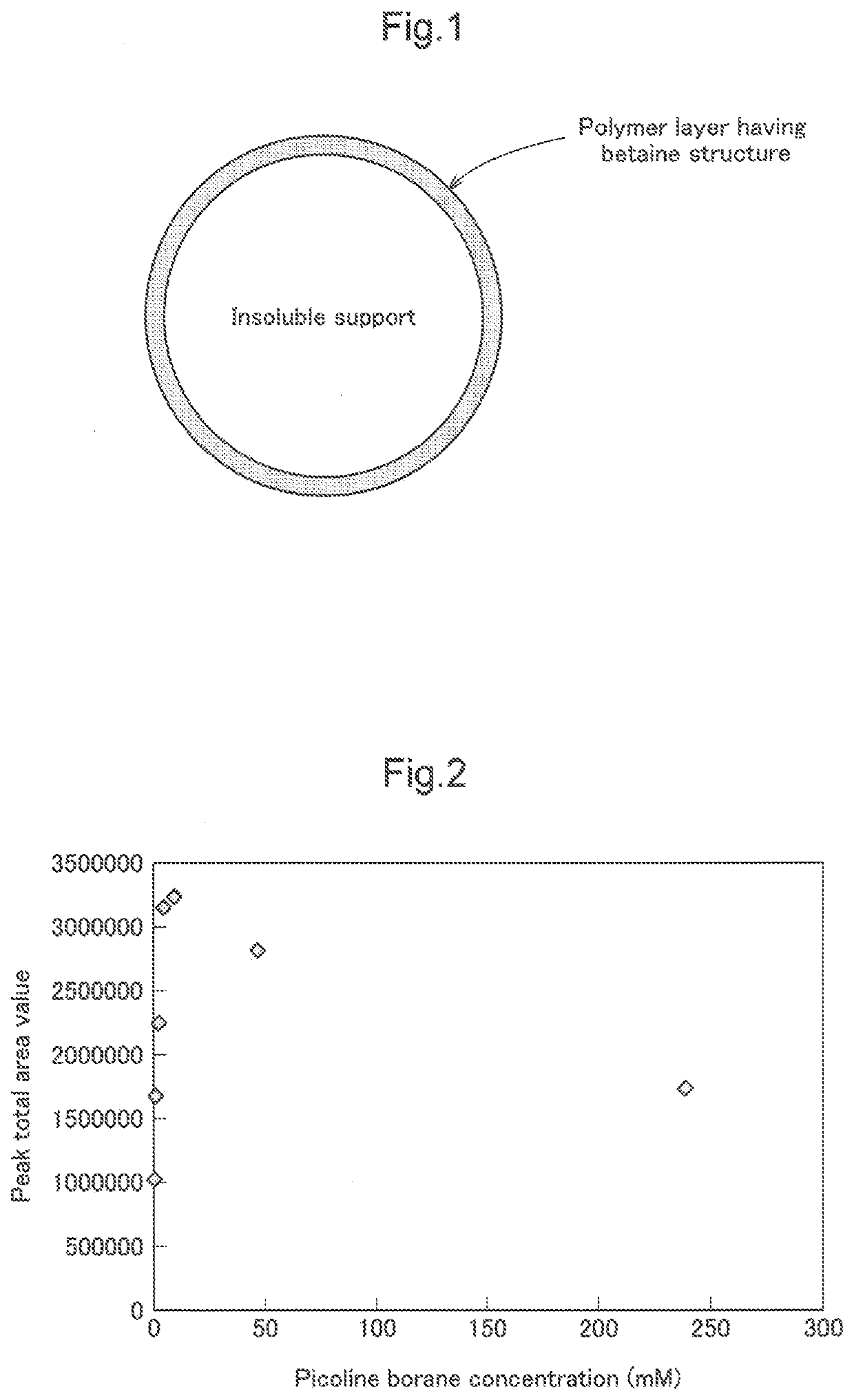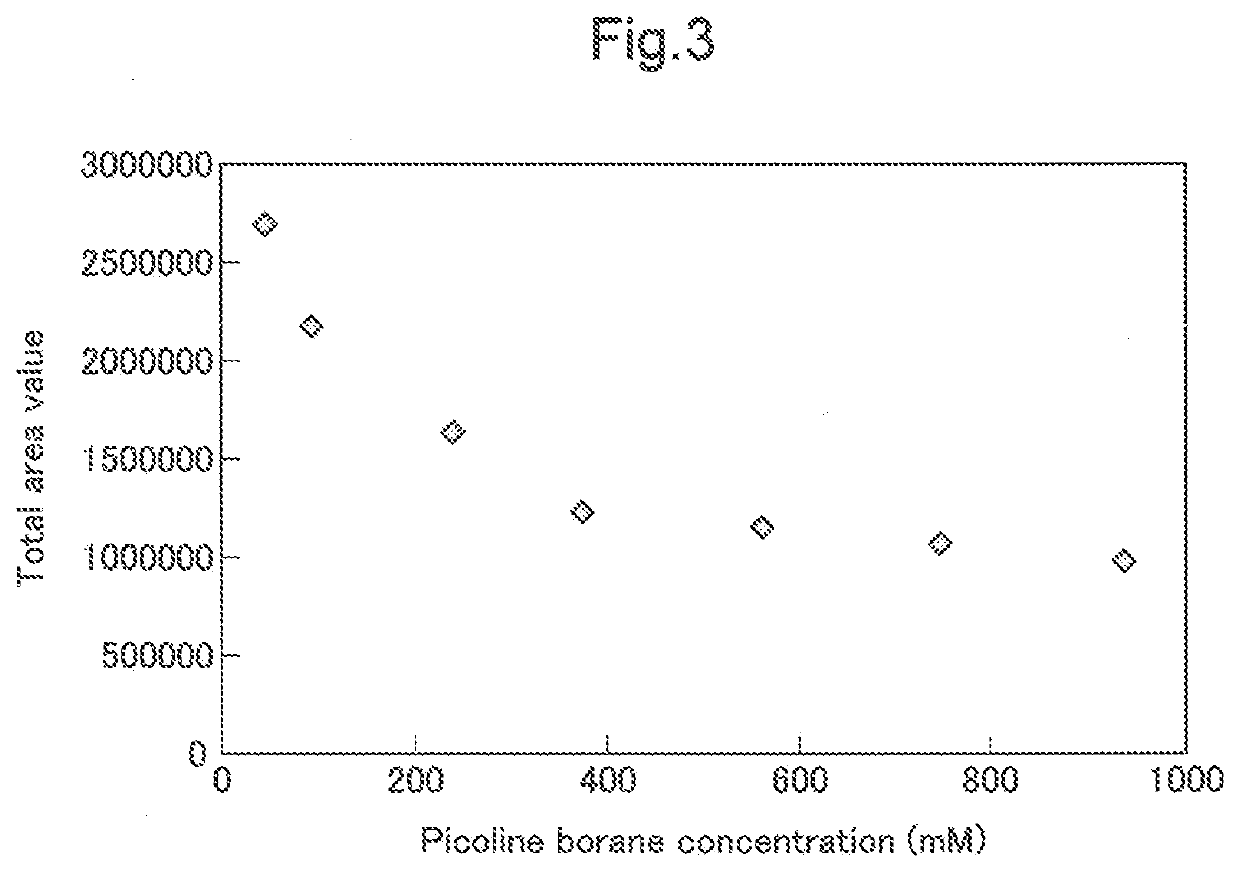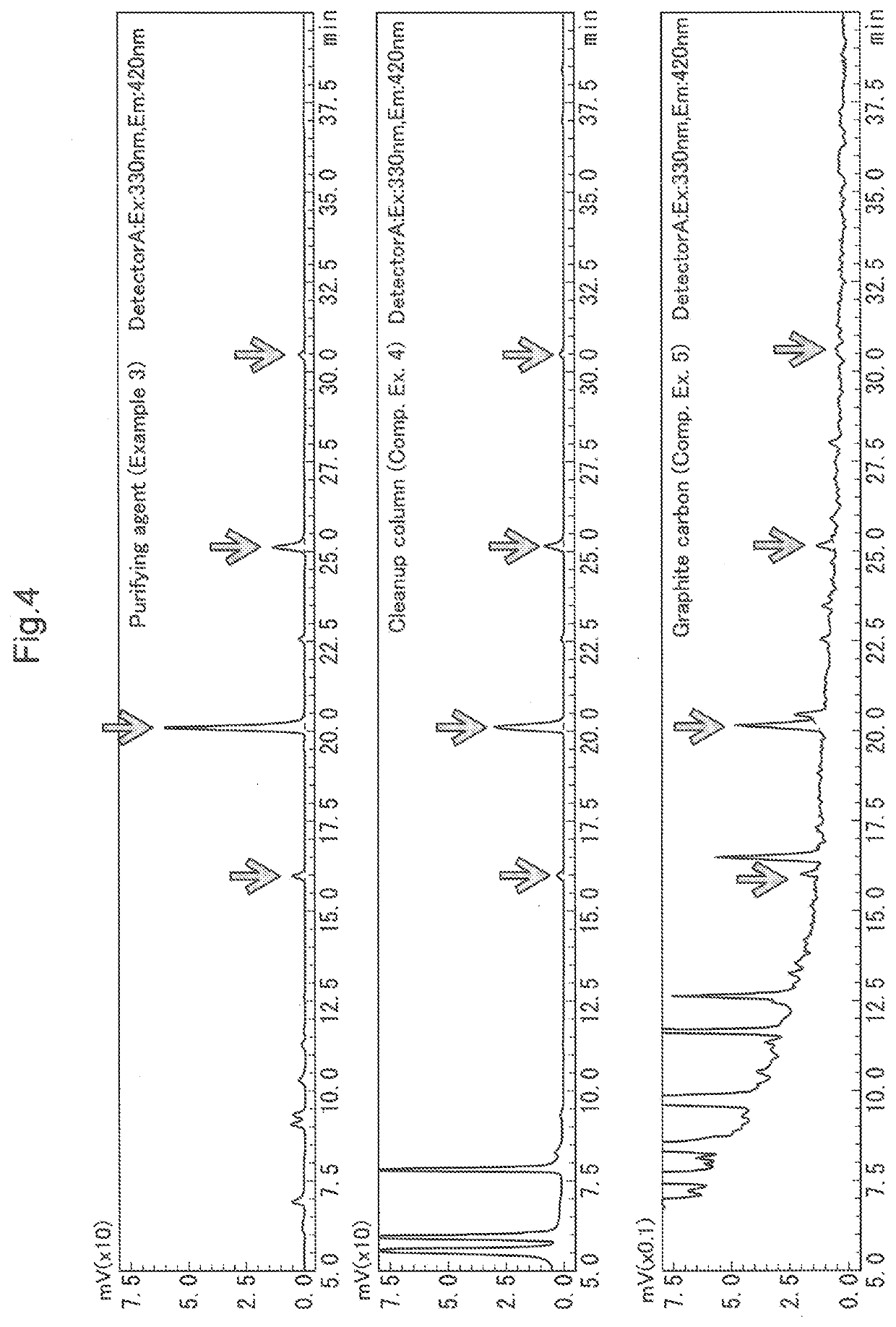Method, Kit, and Device for Preparing Glycan from Glycoprotein
- Summary
- Abstract
- Description
- Claims
- Application Information
AI Technical Summary
Benefits of technology
Problems solved by technology
Method used
Image
Examples
example 1
Synthesis of Purifying Agent
[0188]A carrier for concentrating a glycan in which a polymer whose side chain having a betaine structure is bonded to the main chain thereof is immobilized on an insoluble support was synthesized as the purifying agent. Although the synthesis of a polymer that contains a constitutional unit derived from 2-methacryloyloxyethyl phosphorylcholine (referred to as an “MPC polymer” hereinafter) on the surface of silica beads is described specifically, it is not intended to limit the scope of the present invention.
Synthesis of Purifying Agent
[0189]Introduction of Chain Transfer Group into Silica Beads
[0190]5 g of a silane coupling agent having a chain transfer group was added to a liquid mixture of 50 mL of an aqueous solution of acetic acid with a pH of 3.0 and 50 mL of ethanol, the resulting mixture was stirred at room temperature for 1 hour to hydrolyze the silane coupling agent, 5 g of silica beads, which are inorganic particles, were introduced as an examp...
example 3 preparation
of Glycan / Purifying Agent (1) Release of O-Linked Glycan
[0203]Bovine fetuin protein (20 μg) was added to a liquid mixture of 50% hydroxylamine aqueous solution and DBU (5:2 (volume ratio), 15 μL) and was mixed, and the resulting mixture was heated using a heat block at 37° C. for 75 minutes.
(2) Collection of O-Linked Glycan
[0204]1000 μL of acetonitrile was added to 15 μL of the solution (1) prepared in (1) above and was mixed well, and the resulting mixture was added to 1 mg of the carrier synthesized as the carrier for purifying glycans in Example 1 above, and was mixed well. The mixture was added to a spin column (Ultrafree-MC, Millipore Cat#: UFC30HVNB), and the carrier and the solution were separated from each other through centrifugation using a table-top centrifuge. Then, 400 μL of acetonitrile was added, and the solution was removed through centrifugation. 400 μL of acetonitrile was added again, and the solution was removed through centrifugation.
(3) Labeling of O-Linked Glyc...
PUM
| Property | Measurement | Unit |
|---|---|---|
| Fraction | aaaaa | aaaaa |
| Fraction | aaaaa | aaaaa |
| Molar density | aaaaa | aaaaa |
Abstract
Description
Claims
Application Information
 Login to View More
Login to View More - R&D
- Intellectual Property
- Life Sciences
- Materials
- Tech Scout
- Unparalleled Data Quality
- Higher Quality Content
- 60% Fewer Hallucinations
Browse by: Latest US Patents, China's latest patents, Technical Efficacy Thesaurus, Application Domain, Technology Topic, Popular Technical Reports.
© 2025 PatSnap. All rights reserved.Legal|Privacy policy|Modern Slavery Act Transparency Statement|Sitemap|About US| Contact US: help@patsnap.com



